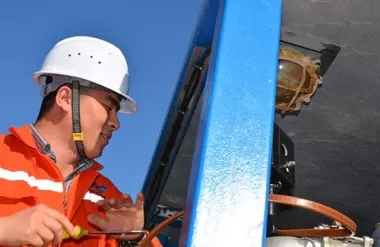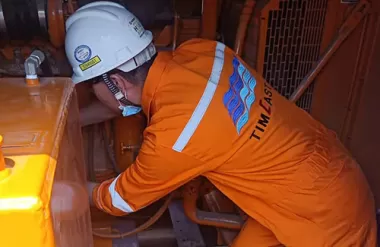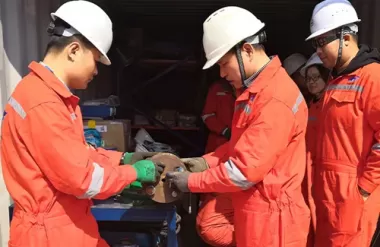Feb. 15, 2023
A hydro test, short for the hydrostatic test, is a procedure used to test the strength and integrity of pressure vessels, pipelines, and other equipment that will be used to contain fluids or gases under pressure. The test involves filling the vessel with water and pressurizing it to a level that is above the design pressure, which allows any defects or weaknesses in the vessel to be identified.
There are a variety of reasons why a hydro test might be performed. It may be required as part of the manufacturing process for pressure vessels or pipelines, to ensure that they meet the relevant industry standards for safety and quality. It may also be required as part of regular maintenance and inspection programs to verify that the equipment is still in good working order and able to perform its intended function.
The procedure for a hydro test typically involves the following steps:
Filling the vessel with water: The first step is to fill the vessel with water, typically to a level that covers all the internal components of the vessel. The water is usually deionized or demineralized to prevent corrosion or damage to the internal components.
Pressurizing the vessel: Once the vessel is filled with water, it is pressurized using a pump or other equipment that is capable of delivering a controlled and consistent pressure. The pressure is typically increased gradually over a period of time, to allow any defects or weaknesses to be identified before they can cause catastrophic failure.
Monitoring the pressure: While the vessel is being pressurized, it is important to monitor the pressure closely to ensure that it does not exceed the maximum allowable working pressure (MAWP) of the vessel. If the pressure exceeds the MAWP, it could cause the vessel to rupture or fail, which could result in serious injury or death.
Holding the pressure: Once the vessel has been pressurized to the desired level, it is held at that pressure for a set period of time, typically several hours. This allows any leaks or defects to be identified and repaired before the vessel is put into service.
Depressurizing the vessel: After the holding period has elapsed, the pressure is gradually released from the vessel, typically using a controlled release valve. The vessel is then drained of water and dried to prevent corrosion or damage to the internal components.
There are a variety of factors that can influence the results of a hydro test, including the type of vessel or pipeline being tested, the material used to construct the vessel, the design pressure and temperature, and the method used to pressurize the vessel. In general, however, a hydro test is a reliable and effective way to ensure that pressure vessels and pipelines are safe and in good working order.
In addition to testing the strength and integrity of pressure vessels and pipelines, a hydro test can also be used to verify that valves, pumps, and other components that are used in conjunction with pressure equipment are functioning correctly. For example, a hydro test may be used to verify that a valve can withstand the pressure and flow rates that it will be subjected to in a real-world application.
There are some risks associated with hydro testing, particularly if it is not conducted correctly or if the equipment being tested is not designed to withstand the pressures that will be applied during the test. These risks can include the potential for equipment failure, the release of pressurized fluids or gases, and the potential for injury or death to personnel who are working in the vicinity of the equipment being tested. As a result, it is important to follow strict safety protocols and to ensure that all personnel involved in the testing process are properly trained and equipped with the necessary personal protective equipment.
Overall, a hydro test is an important procedure that is used to ensure the safety and reliability of pressure vessels, pipelines, and other equipment that is used to contain fluids or gases.
Dec. 12, 2023
The Basics of Electric Heat Trace Technology In the world of industrial processes and temperature control, Electric Heat Trace (EHT) technology plays a crucial role.Nov. 23, 2023
Performing a Leak Test: Step-by-Step Guide A leak test is a crucial procedure to ensure the integrity of a system and identify potential leaks in pipes, joints, or containers.Nov. 08, 2023
Main Steps of a Flange Management Procedure Flange management is a critical aspect of maintaining the integrity and reliability of piping systems in various industries.

